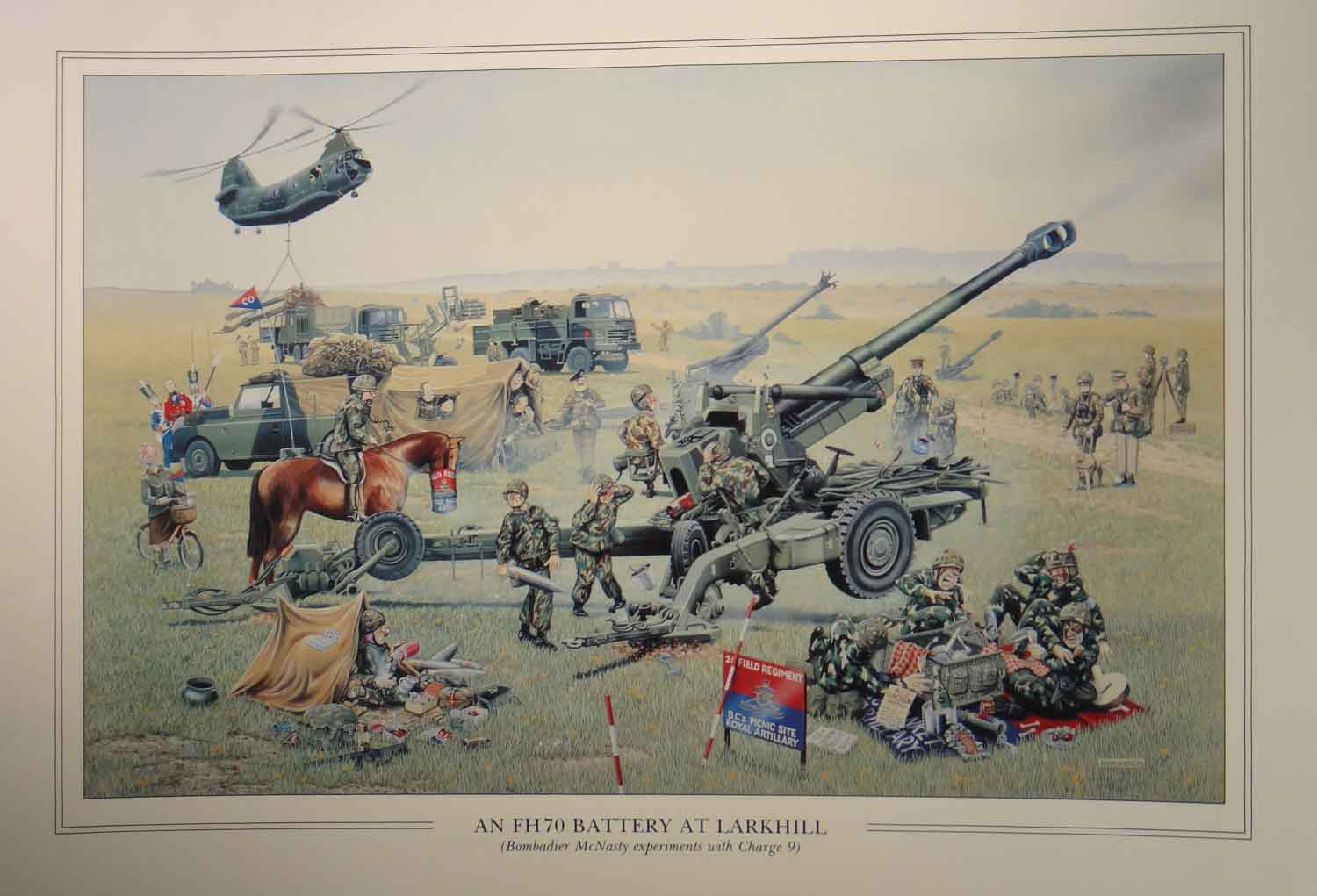FH70 battery at Larkhill
Beringer

FH70 battery at Larkhill
open edition print of 100 by Beringer
Image size 24" x 16"
FH70 had several interesting features, including:
a vertical sliding-block breech that provided obturation and held a primer magazine containing 12 primers (a similar breech was fitted to German M109G)
burst fire
an on-board 1700 cc Volkswagen engine to power the hydraulics and to assist bringing the gun into and out of action (with hand pump back-up)
and to move the gun up to 20 km at low speed without towing by an artillery tractor
electronic firing data display taking data from the otherwise conventional azimuth and elevation sights.
The barrel was 39 calibres long, giving 827 m/s standard maximum muzzle velocity.
It had a muzzle brake giving 32% efficiency.
Other conventional features included a split trail and turntable sole plate.
Initially, it had assisted loading, but became an early user of flick-ramming.
In accordance with long-standing UK practice, it used one-man laying.
All this meant that the gun could be operated by a minimum detachment of only 4 men (commander, layer and 2 loaders). The burst fire rate was 3 rounds in 15 seconds.
It was also fitted with a direct fire telescope.
There were a number of design flaws that became apparent in service.
The equipment entered full operational service in the UK in 1980.
It became clear that there were significant difficulties with the tube feed system in anything but ideal conditions.
1st Regiment RHA, a unit that had conducted the Troop trials, developed their own procedures to solve these problems, related to dust contamination, and this process became established in official manuals in due course.
More significantly, the trails of the gun proved to be weak at the point where maximum stress was incurred when the equipment was towed; this resulted in modification work on the UK guns in 1987.
There were continual problems with the drive train on the flat-4 VW APU, and the hydraulic system was always vulnerable to the obvious problems posed by external, non-armoured, housing in combat conditions.
In addition, the complex dial sight carrier was vulnerable to damage.